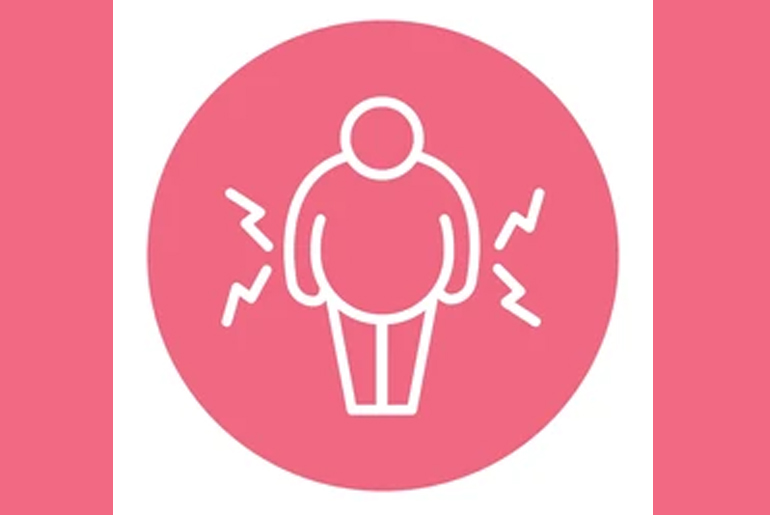Cushing’s syndrome is a rare hormonal disorder caused by excessive cortisol production from the adrenal glands. It can be identified by symptoms such as purple stretch marks and a fatty hump between the shoulders.
“Cortisol has effects on almost every organ in our body; it is essential for maintaining blood pressure, blood sugar, energy metabolism and inflammation control. This hormone is often called the stress hormone as the adrenal glands produce more cortisol to regulate the stress response. Excessive cortisol levels over a period cause a complex disorder called Cushing’s syndrome,” the doctor described.
Types of Cushing’s Syndrome:
Cushing’s syndrome is a hormonal disorder caused by prolonged exposure to high levels of cortisol in the body. It can be classified into two main types:
1. Exogenous Cushing’s Syndrome
This is the most common form of Cushing’s syndrome and occurs when the body is exposed to excess cortisol from external sources. The primary cause is the prolonged use of steroid medications like prednisone, dexamethasone, or hydrocortisone, which are prescribed for conditions such as:
- Rheumatoid arthritis
- Asthma
- Lupus
- Joint problems
- Prevention of organ transplant rejection
Cortisol can enter the body through tablets, injections, creams, or inhalers, leading to exogenous Cushing’s syndrome.
2. Endogenous Cushing’s Syndrome
This occurs when the body produces excessive cortisol on its own, usually due to a tumor in one of the following areas:
- Pituitary gland (causing Cushing’s disease)
- Adrenal gland
- Other ectopic tumors in the lungs, pancreas, or thymus
Endogenous Cushing’s syndrome is rare, affecting about 10 to 15 people per million per year. It is more common in women, particularly those between 20 and 50 years old.
Early Warning Signs of Cushing’s Syndrome
- Excess weight gain around the belly (central obesity)
- Rounded, puffy face (moon face)
- Excess hair growth on the face, neck, chest, abdomen, and thighs (hirsutism)
- Significant fat accumulation in the upper back (buffalo hump)
- Thin arms and legs despite overall weight gain
- Dark red or purple stretch marks on the chest and belly
Early detection of these symptoms is crucial for managing and treating Cushing’s syndrome effectively.
Diagnosis of Endogenous Cushing’s Syndrome
Diagnosing endogenous Cushing’s syndrome can be challenging, as it requires multiple tests to confirm excess cortisol levels and identify the source of cortisol overproduction. The diagnostic process includes:
- Measuring Cortisol Levels
- Blood tests
- Urine tests (24-hour urinary free cortisol test)
- Saliva tests (late-night salivary cortisol test)
2. Determining the Source of Excess Cortisol
- ACTH Levels Test: Helps differentiate between pituitary-related Cushing’s disease and adrenal or ectopic sources.
- Imaging Scans:
MRI (Magnetic Resonance Imaging) – Used to detect pituitary tumors.
CT Scan (Computed Tomography) – Helps identify adrenal or ectopic tumors.
- Advanced Diagnostic Techniques:
Octreotide Scanning (Nuclear Medicine Imaging): Used to detect ectopic tumors.
Inferior Petrosal Sinus Sampling (IPSS): A specialized test to determine if the pituitary gland is responsible for excess ACTH production.
3. Treatment Approaches
- Surgical removal of the tumor (first-line treatment).
- Repeat surgery or gamma knife radiosurgery may be needed for pituitary-related cases.
- Medical therapies to manage cortisol levels if surgery is not effective.
Prevention Tips
Medication Management
- Since glucocorticoids (steroids) are a common cause of exogenous Cushing’s syndrome, it is essential to:
Use the smallest effective dose for the shortest possible time.
- Always take steroid medications under medical supervision.
Genetic Counseling
- Individuals with a family history of pituitary tumors or adrenal gland abnormalities may benefit from genetic counseling and frequent monitoring.
- While genetic factors can increase the risk, tumor formation cannot be completely prevented.
Early detection, proper medical management, and lifestyle adjustments can help reduce the risk and complications associated with Cushing’s syndrome.
Disclaimer:
The information contained in this article is for educational and informational purposes only and is not intended as a health advice. We would ask you to consult a qualified professional or medical expert to gain additional knowledge before you choose to consume any product or perform any exercise.







